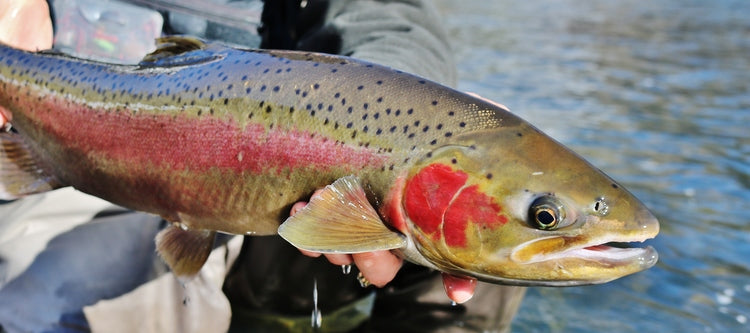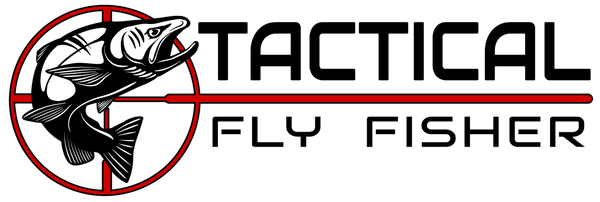
Squirmy Wormy Fly Tying Tutorial
Share
If you fall into the category of a fly fishing purist or you have reservations about fishing certain types of flies which bridge the gap between what some consider flies and what some consider lures for the hardware angler, you may want to close your browser and avert your eyes. If you are willing to delve into the fringes of fly tying and catch a lot of fish because of it, then I encourage you to keep reading.
I don't know the exact history of the Squirmy Wormy, but as far as I know it was created by Dave Hise of North Carolina. About 5 years ago a few competitive anglers in NC added it to their arsenal and it took the US competition circuit by storm. When the US Youth Fly Fishing Team won the World Youth Fly Fishing Championships in 2014, a couple other countries claimed the Squirmy Wormy was the only reason for their win. Thankfully, they disproved those claims in 2015 by repeating their performance after sharing the fly with the other youth teams after the tournament the year before. The fly has received herald and ire in the competition world since. After the youth team's performance in Poland, the Czech team requested unsuccessfully that it be banned in FIPS-Mouche governed competitions. Simultaneously, the Squirmy Wormy exploded through the fly fishing scene in Europe and the UK.
I had the aforementioned reservations about the squirmy wormy myself when I first was introduced to it four or five years ago. I refused to fish it for a while until I was handily beaten in a few sessions by other competitors. For one thing, I naively thought that it would only work on stocked trout like those it was so successful on in North Carolina. I also shunned it because I considered it to be nothing more than a rubber worm for bass that had made its way into fly fishing. The latter concern may still be valid if you're squeamish about fishing "lures" but I was definitely wrong about its effectiveness on wild trout. I found that out through a few memorable days with it on a tailwater in Colorado.
While I was living in Fort Collins for grad school there was a tailwater I fished during the winter when there were few other options around. In their infinite wisdom, the local water authority often lets 7-10 cfs through the dam through the early winter months. Sometime in February they often turn the river up to 150-200 cfs in an instant. It was during one of these flow changes that I ventured to the river for the first time. I was catching browns and rainbows fairly consistently but thought there was opportunity for more so I pumped a couple of fish and they had aquatic worms in their stomachs. I had a few vernille San Juan Worms and some Squirmy Wormies tucked into my box. Even though the worms were a typical brownish earthworm color, I decided to tie on a San Juan red (really pink) Squirmy Wormy and see what happened. Simply put, my catch rate doubled or tripled instantly compared to the typical impressionistic nymphs I had on before the change. To compare, I took off the Squirmy Wormy and tied on the tan vernille worm that was a very close imitation of the worms I had seen in the pump samples. I struggled to catch fish until I switched back to the Squirmy Wormy. Ensuing trips to the same river (and to others where I didn't find worms in pump samples) quickly humbled me and made me realize what I had been missing. The Squirmy Wormy has been a staple in my box ever since. It has caught trout and grayling around the world for me and recently has been pretty successful for steelhead as well.
A small steelhead I caught a few trips back on a Squirmy Wormy while fishing my Cortland three weight in water I expected only trout in.
The Squirmy Worm is generally an all or nothing fly for me. It usually either drastically increases catch rate or fish won't touch it at all. Because of this I often tie it on during a day's fishing, even if I don't expect it to work. Normally I will get a fairly quick response if I fish the fly through productive holding water. If it doesn't work then I pack it away until the next outing. The Squirmy Material can be chewed up by fish fairly easily so I usually tie quite a few more than other flies. Thankfully they are quick to tie. I usually keep the same size hook and just vary the bead size for weight.
There are a few tying tips I have for the Squirmy Wormy:
- Don't use anything smaller than 6/0 thread. Small thread can cut through the material.
- Don't use head cement. Depending upon the type it can dissolve the squirmy material.
- Lay a thread base down and focus on pinch wrapping the material when tying it down, but do it delicately. If you don't pinch wrap then the squirmy material will roll around the hook when you tie it in.
- Do not leave squirmies in a hot car or get them near a heat source because they will melt. I've lost a couple entire boxes of several hundred squirmies to this mistake!
Here are the materials for the Squirmy Wormy. Keep scrolling for the tools used:
- Hook: Fulling Mill 5125, Fasna F-444, Fasna F-415, Dohiku 303. I generally tie on size 12 hooks for 2.3 to 2.8 mm beads, size 10 hooks for 3.3 mm beads, and size 10 or 8 hooks for 3.8 mm beads.
- Thread: Uni 6/0 Red, Semperfli 6/0 Classic Waxed Thread Red, Veevus Power Thread 70 or 140 Denier in Red, Sybai UVR Thread Hot Red
- Squrimy Wormy material: Spirit River or Caster's Squirmito (any color you like)
Tools Used:

